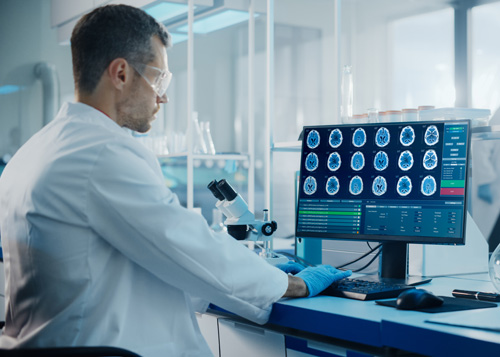Heroin is a highly addictive illegal opioid drug extracted from opium poppy plants. Users inject, smoke, or snort heroin, and quickly become addicted to the drug’s intense euphoric “rush” and pain-relieving properties. Because heroin is both physically and psychologically addictive; it is best treated at a professional rehabilitation center.
According to the Centers for Disease Control and Prevention (CDC) statistics, heroin use is steadily increasing across all demographics in the United States. This escalation is likely related to the opioid epidemic. As millions of those addicted to opioids find it increasingly difficult to obtain the drug due to stricter prescribing laws, many turn to heroin. Heroin is cheaper than purchasing prescription opioids on the illegal market and is readily available.
Because heroin is an illegal street drug, it is impossible to know if it has been contaminated with an unknown substance. The drug may have been cut with something harmless, like sugar, starch, powdered milk, or quinine, or it may contain more deadly substances.
The Drug Enforcement Administration (DEA) classifies heroin as a Schedule 1 drug. This means the drug has a high potential for abuse and has no legitimate medical applications. Heroin is only available illegally as a street drug. The drug is known by many street names, including Big H, Black Tar, Chiva, Hell Dust, Horse, Negra, Smack, and Thunder.
Upon use, individuals feel the effects of heroin almost immediately. Users quickly experience an intense rush of euphoria, as well as relief from anxiety, stress, and pain.
Once heroin enters the bloodstream, it binds to and activates opioid receptors in the brain, releasing endorphins (“feel good” hormones) that trigger a sense of euphoria and block pain signals. After this initial surge of euphoria, users may experience a dream-like state. Breathing, heart rate, motor and cognitive functions, and reactions slow down, while the user becomes drowsy and lethargic. Dangerous levels of respiratory depression are possible, which can lead to coma, brain damage, or death.
When the pleasure and reward center of the brain is activated naturally, the body releases endorphins and dopamine in response to a pleasant experience. Heroin causes a much more intense physical and emotional response, strongly reinforcing the behavior.
Continued heroin use causes the body to adapt to the drug’s presence, creating an imbalance in the brain. This adaptation results in a demand for increasingly higher doses of heroin to achieve the desired effect. This is called tolerance, which is a sign of addiction. Once tolerance sets in, if an individual abruptly stops their drug use, they will likely experience withdrawal symptoms.
The National Institute on Drug Abuse (NIDA) website states heroin withdrawal symptoms may include restlessness, muscle and bone pain, insomnia, diarrhea, vomiting, cold flashes with goosebumps, and leg movements. While withdrawal symptoms typically last about a week, peaking 24–48 hours after the last dose of heroin, some individuals continue to experience symptoms for several months.
Regular, long-term use of heroin can cause devastating physical and psychological damage. Over time, the brain becomes unable to naturally produce the chemicals that regulate mood and pleasure, so the user can only feel good, or even “normal,” by using heroin.
Heroin use has the potential to damage numerous functions of the brain, many of them life-sustaining. Areas of damage may include the:
Multiple research studies have found that regular heroin use causes the brain’s white matter to deteriorate, contributing to impaired decision making, judgment, ability to handle stress, and impulse control. This puts heroin users at an increased risk for severe depression, risky decision making, and suicide. This damage to the brain may be irreversible.
In addition to brain damage, continued heroin use may cause damage to the heart, liver, kidneys, reproductive system, and digestive system. Chronic insomnia may occur in all users, as well as sexual dysfunction in men. Users who inject heroin are at increased risk for skin or other bacterial and fungal infections, collapsed veins, skin abscesses, and diseases like HIV/AIDS, Hepatitis B, and Hepatitis C.
NIDA warns that regular heroin use often leads to heroin use disorder, which is defined as “a chronic relapsing disease that goes beyond physical dependence and is characterized by uncontrollable drug-seeking, no matter the consequences.” According to NIDA, at this point, drug-seeking becomes the user’s primary goal in life, and it is unlikely the user can quit without professional assistance.
There are many outward warning signs of heroin use and dependence, as well as some signs that are not as easily recognizable.
CDC statistics indicate, “In 2020, more than 13,000 people died from a drug overdose involving heroin in the United States, a rate of more than four deaths for every 100,000 Americans.” Emergency room visits for heroin-related overdose have also steadily increased. All overdoses are medical emergencies. If an overdose is suspected, immediately contact 911.
An individual overdosing on heroin may become extremely sleepy or unconscious and may stop breathing. Some of the most common signs of heroin overdose include very slow, shallow breathing, discolored tongue, pinpoint pupils, blue-tinged lips, fingernails, and skin, muscle spasms, clammy skin, convulsions, weak pulse, low blood pressure, disorientation, or coma.
A drug called Naloxone can reverse heroin overdose if administered quickly. Once this life-saving drug was only available to medical personnel, but that has changed. In 2014, the U.S. Food and Drug Administration (FDA) approved a hand-held auto-injector called Evzio® for use by non-medical individuals, including family members, and in 2015, the FDA approved a Naloxone nasal spray, which can also be used by family members.
Anyone can obtain the Naloxone nasal spray directly from a pharmacist without a doctor’s prescription. The spray is covered by most major insurance plans.
Heroin addiction is difficult to overcome without professional help. Withdrawal should always be medically supervised as severe side-effects can be fatal. A doctor can administer medications to help reduce the severity of withdrawal symptoms, keeping the patient safer and more comfortable during detoxification.
Addiction is a chronic disease, requiring a comprehensive, long-range treatment plan for successful recovery. Medically supervised detoxification is just the first step in the treatment protocol. Once an individual completes detox, behavioral therapies, support group participation, medications, and aftercare typically form the foundation of their treatment plan.
Quality treatment programs begin with a comprehensive medical assessment to determine overall mental and physical health, and to identify any co-occurring disorders. A co-occurring disorder, also called dual diagnosis, indicates the presence of both a substance use disorder and another mental disorder. For successful recovery, both disorders must be addressed during treatment.
At StoneRidge Centers, we view addiction and substance abuse through the lens of science, understanding that parts of the brain, including receptors for dopamine and opioids, can become easily hijacked by addictive substances. That’s why the StoneRidge addiction recovery program focuses on healing the brain.
We take the best evidence-based clinical therapeutic approaches and combine them with the latest innovative neuroscience-based treatments. All treatment plans are overseen by our triple-board-certified medical director.
Our highly trained, compassionate staff guides patients to better understand the addiction cycle, to explore their thoughts and feelings associated with addiction, to identify triggers to their own addictive behavior, to learn key coping skills, and to practice relapse prevention.
Contact StoneRidge Centers today to find out how we can help you or a loved one heal the damage caused by heroin addiction and start the journey to long term recovery.

TMS, Ketamine & Neurofeedback
Brain-focused treatment that sets us apart.
StoneRidge offers what few other practices provide – innovative, scientifically proven, and research-backed therapeutic options. From Transcranial Magnetic Stimulation (TMS) to Brain Mapping, our treatment combines trusted practices with modern approaches, ensuring our patients receive the best all-around care.


We exercise progressive, leading brain science in our treatment approach for patients in the Prescott Valley community and across the country who are struggling with mental health and addiction challenges.
© 2025 StoneRidge Centers – Prescott Valley. All Rights Reserved.